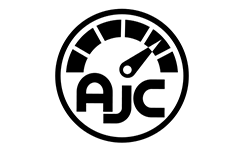The Dos and Don’ts of Charging Sealed Lead-Acid Batteries

BatteryClerk has been in the Sealed Lead Acid world since 2006 and as a result, we’ve seen all types of issues that come from owning an SLA battery. A key issue is around charging the batteries. If you treat your SLA battery well, you should expect to get up to a 5-year lifespan. If you want to ensure that you maximize the lifespan of your lead-acid battery and get the best value for money we suggest paying attention to taking care around charging SLA Batteries.
We’ve put together a list of some dos and don’ts to consider when charging and using sealed lead-acid batteries.
Optimal Charging and Care for Sealed Lead-Acid Batteries
Sealed lead-acid (SLA) batteries are robust power sources, but their lifespan and performance depend heavily on proper charging and maintenance. We’ve put together a list that should help you get the most out of your SLA batteries and especially prevent common issues like sulfation and premature failure.
DO’s for Charging Sealed Lead-Acid Batteries
- Do use a “smart” charger designed for SLA batteries. These chargers typically feature multi-stage charging (bulk, absorption, float) which is crucial for optimal battery health. They automatically adjust voltage and current, preventing overcharging.
- Do apply a saturated charge to prevent sulfation. Sulfation is the formation of lead sulfate crystals on the battery plates, which reduces capacity and ultimately kills the battery. A “saturated charge” (often referred to as a “full charge” or “topping charge”) is essential to convert these crystals back to active material. For larger batteries, this can take 14-16 hours.
- Do maintain the correct float voltage. Once fully charged, a smart charger will switch to a “float” stage. This maintains the battery at a slightly elevated voltage (typically between 2.25V and 2.30V per cell, or 13.5V to 13.8V for a 12V battery) to counteract self-discharge and prevent sulfation without overcharging. You can keep the battery on float charge for extended periods if your charger is designed for it.
- Do charge after every use. This is a critical practice for SLA batteries. Even partial discharges should be followed by a full recharge to prevent the accumulation of sulfation and maximize cycle life.
- Do ensure proper ventilation during charging. While sealed, some gas can still be vented during charging, especially if overcharged. Charge in a well-ventilated area to disperse any potential hydrogen gas, which is explosive.
- Do keep batteries cool during charging. Excessive heat during charging can significantly shorten battery life. If the battery feels hot to the touch, disconnect it and allow it to cool before resuming charging. Aim for a charging temperature range between 5∘C and 35∘C (41∘F to 95∘F).
- Do consider temperature compensation if charging in extreme temperatures. Some advanced chargers offer temperature compensation, which adjusts the charging voltage based on ambient temperature to ensure optimal charging and prevent over/undercharging.
- Do read the manufacturer’s manual. Always refer to the specific instructions provided by the battery manufacturer for recommended charging voltages, currents, and maintenance schedules.
DON’Ts for Charging Sealed Lead-Acid Batteries
- Don’t use fast charging methods if possible. While some SLA batteries can tolerate higher charge rates for a portion of their charge cycle, routine fast charging can lead to increased heat, gassing, and reduced battery lifespan. Slow, controlled charging is generally preferred for longevity.
- Don’t allow full discharges (deep cycling) to zero volts. Sealed lead-acid batteries are not designed for deep discharges. Repeatedly discharging them below their recommended voltage (typically below 10.5V for a 12V battery) causes irreversible damage (permanent sulfation and plate shedding) and drastically shortens their lifespan. Charge the battery before it reaches a deeply discharged state.
- Don’t store SLA batteries in a discharged state. Leaving an SLA battery discharged, even for a short period, can lead to irreversible sulfation and loss of capacity. Always store them fully charged.
- Don’t overcharge without proper float voltage control. While smart chargers prevent this, using a basic charger that continuously applies a high voltage after the battery is full will lead to overcharging, gassing, electrolyte loss (even in “sealed” batteries via pressure vents), and ultimately damage the plates.
- Don’t allow batteries to overheat. As mentioned above, excessive heat is a battery killer. If you notice swelling, a strong odor, or extreme heat from the battery, disconnect it immediately and discontinue use.
- Don’t deep-cycle starter batteries. Starter batteries (like those in cars) are designed to deliver a high burst of current for a short period and are not built to withstand deep discharges. Deep cycling a starter battery will severely damage it and make it unable to start your equipment.
- Don’t use a charger not specifically designed for SLA batteries. Different battery chemistries have different charging requirements. Using a charger meant for a different battery type (e.g., lithium-ion) can damage your SLA battery or pose a safety risk.
Additional Tips for Prolonging a Sealed Lead-Acid Battery’s Life
- Limit deep cycling: As stressed above, avoiding deep discharges is the single most important factor for extending the life of an SLA battery.
- Charge after every use: Consistent recharging after discharge, no matter how small, keeps the battery in optimal condition.
- Apply full saturation on every charge: Ensure the battery receives a complete charge to prevent sulfation.
- Avoid overheating: Both during charging and operation, keep the battery in a cool environment.
- Store properly: If storing for an extended period, ensure the battery is fully charged and maintained with a topping charge every six months to prevent sulfation. A good storage voltage is typically above 2.05V per cell.
In Summary
The above list emphasizes the importance of proper charging and care for sealed lead-acid (SLA) batteries to ensure their longevity and performance. Key “DO’s” for charging include using smart chargers designed for SLA batteries, applying a saturated charge to prevent sulfation, maintaining the correct float voltage for long-term connection, and consistently charging the battery after every use. It’s also crucial to ensure proper ventilation and keep batteries cool during charging, potentially using temperature compensation in extreme conditions, and always consulting the manufacturer’s manual.
Conversely, “DON’Ts” highlight avoiding fast charging methods, never allowing full discharges to zero volts, and not storing batteries in a discharged state. Overcharging without proper float control, allowing batteries to overheat, deep-cycling starter batteries, and using chargers not specifically designed for SLA batteries are also strongly advised against. To prolong battery life, we stress limiting deep cycling, charging after every use, consistently applying a full saturation charge, avoiding overheating, and storing batteries fully charged with periodic topping charges. Of course, even with the right treatment, SLA batteries do have a limited shelf life so feel free to search for your exact replacement SLA battery here at BatteryClerk.
